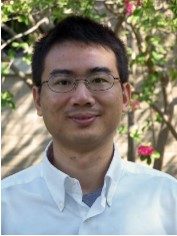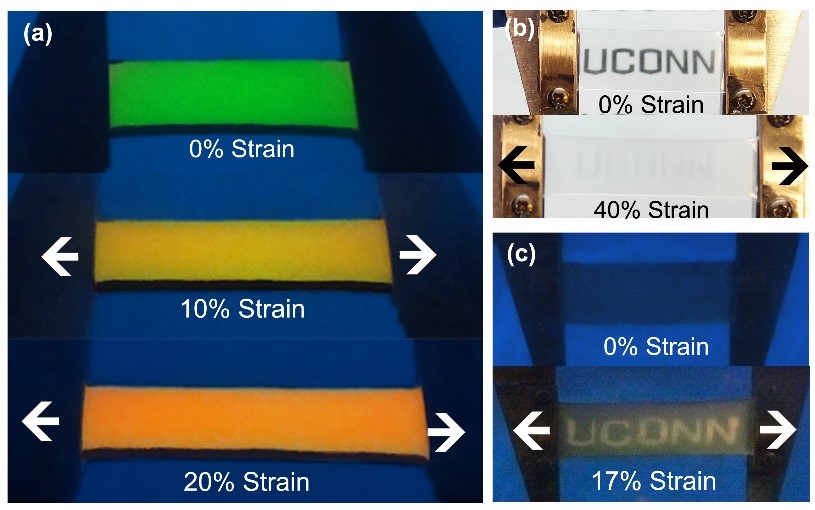康涅狄格大学( the University of Connecticut )Luyi Sun 教授将访问软物质实验和高分子系并做报告“Bio-inspired Multifunctional Stimuli-Responsive Materials” 。

A number of marine organisms use muscle-controlled surface structures to achieve rapid changes in color and transparency with outstanding reversibility. Inspired by these display tactics, we develop analogous deformation-controlled surface-engineering approaches via strain-dependent cracks and folds. A bilayer structure composed of polyvinyl alcohol composite thin film atop elastomer substrate was designed and prepared to achieve dynamic strain-responsive optical properties. The transition between a transparent state to an opaque state can be easily achieved by uni-axially stretching and releasing the device. Also, a series of derivative mechanochromisms with capabilities of switch “on/off” fluorescence, change fluorescent color, reveal/hide information upon mechanical stimuli are prepared. These devices feature virtually no changes in optical/mechanical properties after being repeatedly stretched and released thousands of times, promising for widespread applications. Corresponding mechanics simulation was also explored, which helped to guide a more precise design of the bilayer structure.
报告时间:3月14日(周二)上午10:00
报告地点:环资楼939会议室

Dr. Luyi Sun
is an Associate Professor and Castleman Professor in Engineering Innovation in the Department of Chemical & Biomolecular Engineering and Polymer Program, Institute of Materials Science at the University of Connecticut. His current research focuses on the design and synthesis of nano-structured multifunctional materials for various applications. Dr. Sun has published more than one hundred (100) peer-reviewed journal articles and is the inventor/co-inventor of forty (40) International and US patents/patent applications. The scientific results by Dr. Sun have been reported by major media including Chemical & Engineering News of the American Chemical Society, Materials360 Online of the Materials Research Society (MRS), Smithsonian Magazine, Yahoo, MSN, etc.
Bio-inspired Multifunctional Stimuli-Responsive Materials
Luyi Sun
Department of Chemical & Biomolecular Engineering and
Polymer Program, Institute of Materials Science
University of Connecticut, Storrs, Connecticut 06269
Luyi Sun
Department of Chemical & Biomolecular Engineering and
Polymer Program, Institute of Materials Science
University of Connecticut, Storrs, Connecticut 06269
A number of marine organisms use muscle-controlled surface structures to achieve rapid changes in color and transparency with outstanding reversibility. Inspired by these display tactics, we develop analogous deformation-controlled surface-engineering approaches via strain-dependent cracks and folds. A bilayer structure composed of polyvinyl alcohol composite thin film atop elastomer substrate was designed and prepared to achieve dynamic strain-responsive optical properties. The transition between a transparent state to an opaque state can be easily achieved by uni-axially stretching and releasing the device. Also, a series of derivative mechanochromisms with capabilities of switch “on/off” fluorescence, change fluorescent color, reveal/hide information upon mechanical stimuli are prepared. These devices feature virtually no changes in optical/mechanical properties after being repeatedly stretched and released thousands of times, promising for widespread applications. Corresponding mechanics simulation was also explored, which helped to guide a more precise design of the bilayer structure.

Luyi Sun.jpg
1.jpg
